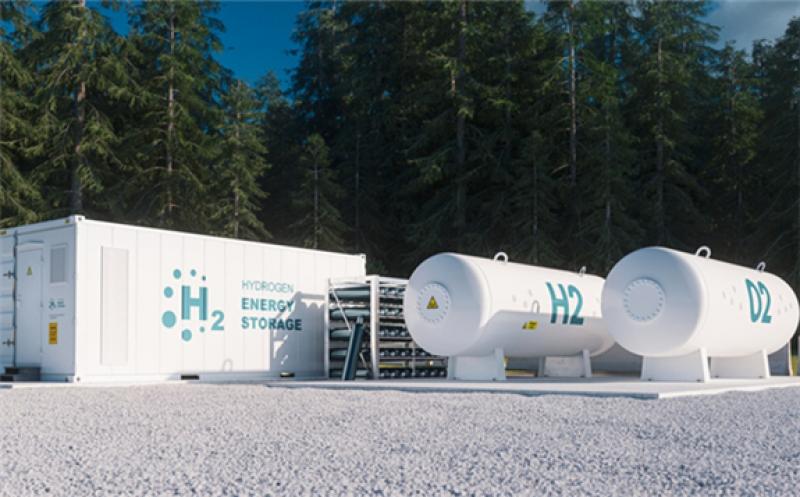Industry association European Hydrogen Backbone (EHB) has recently updated its vision for a dedicated hydrogen transport infrastructure across Europe, now proposing to build an 11,600 km (which was 6,800 km last year) hydrogen transportation network by 2030, which would come up to 39,700 km (as opposed to 23,000 km estimated last year) by 2040, aiming to ship hydrogen among 21 countries, with further growth after 2040. The focus clearly is on taking the ‘if’ out of Hydrogen plans, and replacing it with a much more committed ‘when’. An important issue, when one considers the challenges that still remain before any predictions can be made with certainty on the development and costs, of green hydrogen in particular, Green Hydrogen being hydrogen generated using renewable energy.

Twelve European gas transmission system operators (TSOs) from eleven European countries have come onboard the EHB initiative, and while the previous plan focused on Netherlands, Belgium, Germany, and France, the new proposal has expanded to include the UK and Ireland, significant portions of central and eastern Europe, Greece, Finland, and Estonia. EHB said that around 69% of the proposed hydrogen stream will consist of repurposed existing natural gas grids, and the remaining 31% will comprise of newly built pipelines, necessary for connecting new off-takers located in countries with small gas grids but with high expected future hydrogen demand and supply. One of the reasons why Hydrogen has received support from legacy fossil fuel firms.
Daniel Muthmann, EHB initiative coordinator and head of corporate development, strategy, policy, and communication at OGE (Open Grid Europe), said: “We are glad that eleven new countries have joined the EHB initiative. Our new report shows that a truly pan-European hydrogen infrastructure largely based on repurposed existing gas infrastructure is possible.”
The proposed network, whose length is just 300 km shy of reaching 40,000 km, needs approximately €43 to €81 billion of investment to be injected into it. While this sum is higher than the previous estimate of €27 to €64 billion, the cost per kilometre is lower since the updated vision recommends the use of smaller diameter pipelines which can be repurposed more cheaply.
However, environmentalists are warning against the risk of overdoing the size of the network. Eleonora Moro, a researcher at climate think-tank E3G, says, “Hydrogen infrastructure shouldn’t be an end in itself – if the goal is to use hydrogen as a piece of the EU climate neutrality puzzle, a clustered approach where supply and demand are geographically close may be the best option.” She added, “This would minimise costs, the need for expensive retrofitting, and ensure that today’s gas consumers are not paying for tomorrow’s hydrogen users.”
Among member-countries looking to accelerate their green hydrogen development projects, the German government has approved €52 million for a €300 million hydrogen research project to be carried out by the Norddeutsches Reallabor (North German Physical Laboratory), in a show of support. It has been tasked with exploring a “holistic transformation of the energy system” over five years, across 5 centres in Hamburg, Schleswig-Holstein and Mecklenburg-West Pomerania. In addition to this, several German energy and technology companies, like Uniper, RWE, Bosch, have announced large-scale green hydrogen plants. Dusseldorf-based Uniper has switched plans from setting up an LNG import terminal in Wilhelmshaven, to establishing a national hub of hydrogen in the coastal town, an apparent indication of hydrogen replacing LNG as the more cleaner fuel in future. Further, German RWE Supply & Trading and Australian hydrogen infrastructure company H2U have signed an MoU to establish hydrogen trading between the two countries. Moreover, the German gas transmission system operator OGE has signed a letter of intent to partner with vehicle companies Nikola Corporation and Iveco to set up a “business structure” for transporting hydrogen via its pipeline network to fueling stations supporting fuel-cell electric vehicles (FCEVs).
Some operators have also expressed that Russia might be a possible hydrogen source. The country announced recently that it plans to hold a 20-25% share in the global trade of hydrogen by 2035. Russian plans include hydrogen production using natural gas, besides nuclear power and renewable energy.
As for India’s involvement in the current global plans for long-distance hydrogen transportation, Indu Shekhar Chaturvedi, the top official at the Indian Ministry of New and Renewable Energy, has said that the Indian government will spend $200 million to promote the use of hydrogen. Oil minister Dharmendra Pradhan, who plans to use hydrogen mixed with compressed natural gas (H-CNG) as a transportation fuel, added, “We are looking forward to introducing H-CNG as an intermittent technology in a big way for both automotive and domestic cooking applications.”